March
This month’s focus is on improving student supports. The content aligns with Quality Indicator III: Classroom Climate, Quality Indicator IV: Differentiated Instruction, and Quality Indicator V: Social Communication on the Rubric of Effective Practices for Students with Complex Access Needs and the Administrator Companion Document to the Rubric of Effective Practices for Students with Complex Access Needs. This month you will focus on problem-solving to improve the effectiveness of the supports you use with your students. Download or print the March Monthly Instructional Guide Checklist for your reference.
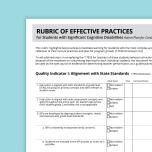
Significant Cognitive Disabilities, Behavior, Instruction, ARD/IEP Supports, Inclusion
Rubric of Effective Practices for Students with Complex Access Needs
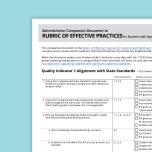
Significant Cognitive Disabilities, ARD/IEP Supports, Instruction, Assistive Technology, Behavior, Inclusion
Administrator Companion Document to the Rubric of Effective Practices for Students with Complex Access Needs
Identify Supports that Need to be Adjusted
All year, you have been busy putting accommodations and supports in place for behavior, academics, and communication. Your classroom uses timers, schedules, charts, technology, task analysis, and work systems. Some students have been making good progress, and you have been increasing the rigor of their instruction and fading their supports. Other students may still be struggling, despite the supports in place. You may notice that supports that used to work are no longer as effective as they were initially. Make a list of those student supports you determine may need some adjustments.
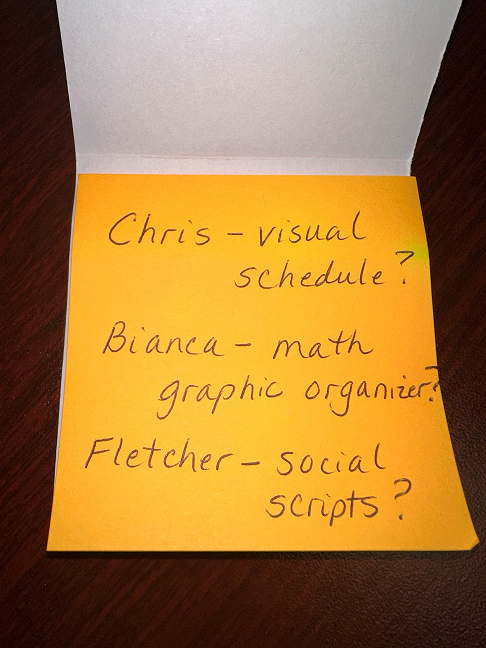
Teacher’s list of student supports that may need to be adjusted. Shannon Beyer-Kaminski, 2023
Embrace Change
Each student comes to school with unique gifts and challenges. As they grow and are exposed to new concepts and ideas, students’ interests, strengths, and needs change. This may require you to adapt their supports until you find the right fit for where they are currently performing. Avoid getting discouraged when your carefully planned supports are not working out quite right. Approach supporting students with a scientific mindset, and problem-solve to find new solutions when a strategy or support is not as effective as anticipated or loses its power over time.

Problem-solve to help students make progress. Texas SPED Support, 2022
Monitor Fidelity of Implementation
One of the first things to look at when the effectiveness of supports decreases is the fidelity of implementation in providing those supports. How consistently is your staff providing access to and using the support with the student? Take some time to collect data and reflect upon how the support is being implemented. The data might show that you just need to increase the fidelity in how the support is used rather than making an adjustment to the support itself. In the Instructional Support Meeting Agenda Template, there is a section for the student’s team to rate their fidelity of implementation of student supports. If your team is lacking in fidelity, concentrate on increasing the accuracy and consistency of use before adjusting the support.

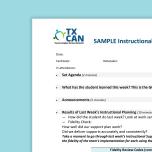
Significant Cognitive Disabilities, Inclusion, Instruction
Instructional Support Meeting Agenda Template
Make Adjustments
If your team is implementing a support with fidelity, but data does not indicate progress, you may need to make an adjustment to the support. You may change:
- Format
- Delivery
Format
If students are having trouble, focus on the format of the support itself and make sure the format provides what the students need. Perhaps the way the student accesses the support or the design of the support itself needs to be adapted. The following considerations may help you adjust your student supports:
- Access – Where should the support be located so that it is available when the student requires it? Is the support automatically provided or does the student need to request to use the support? Is the student currently able to use the support independently or do they need alternate supports added in to increase independence?
- Design – If the support is a concrete item, do you need to modify the physical look of the support to better meet the needs of the student? What size, layout, materials, fonts, images, and/or colors are used in the support? Are student preferences and interests integrated into the style choices? Does the complexity level of the support need to be adjusted? (For example, with a token board, how many tokens do they have to earn to complete the board? Should you reduce the number?)
Delivery
If you are confident the format of the support is best for your student, then maybe you need to use a different approach to teach how to use the support. Does the student need additional direct teaching or more frequent practice using the support? Could a peer model be used? Do additional visual supports need to be added to remind the student to use the support or to break down instructions for how to use the support?
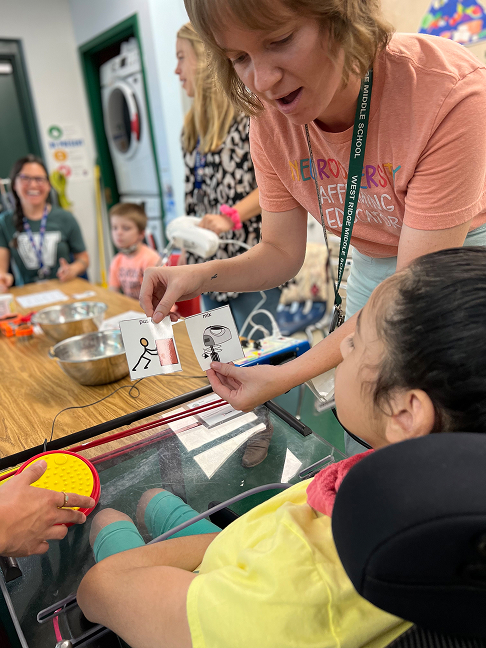
Staff uses visual supports to teach the use of assistive technology. Texas SPED Support, 2023
Extend Your Learning
Learn more about supporting students in the free online course Supports for Participation. This information supports Quality Indicator III: Classroom Climate, Quality Indicator IV: Differentiated Instruction, and Quality Indicator V: Social Communication.

Significant Cognitive Disabilities, Inclusion, Instruction
Supports for Participation for Students with Complex Access Needs
Final thought: Make problem-solving your passion
Your students are constantly learning and growing, and the effectiveness of their supports may change over time. This month, determine if you have any student supports that do not seem to be as impactful as they once were, or have not worked to achieve the results the team anticipated. Then, problem-solve to determine what adjustments to fidelity or the support itself may help make the support more effective for the student.
Data Checkpoint
If your campus has a spring break, make sure to take data after the break to monitor for student regression. This is helpful for determining a need for Extended School Year (ESY) services.
Looking Ahead
In the April Monthly Instructional Guide, we will acknowledge and celebrate the progress you, your students, and staff have made this year!
